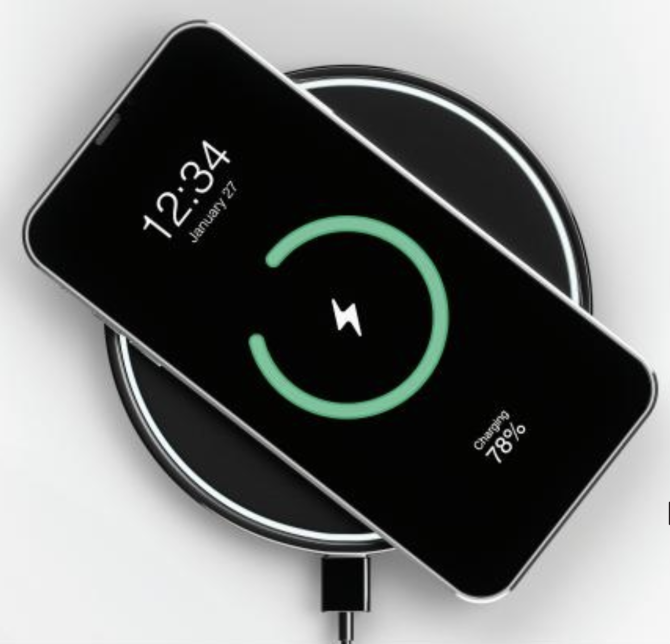
Four ways the wireless power industry will evolve in 2022
By Jacob Babcock, CEO & founder, NuCurrent
Electronics Power Supply / Management Wireless Engineering battery charging Editor Pick power wirelessWIRELESS / POWER
New methods of contactless power transfer and battery charging are transforming how we experience technology at home, in the office and on the go. Whether it’s delivering power to an EV without having to plug it in, or charging your fitness band without ever having to take it off, these wireless power technologies are making significant inroads into our day-to-day lives.
This past year witnessed substantial progress, though: notably, the NFC Forum, the global standards and advocacy association for Near Field Communication (NFC) technology, announced the Wireless Charging Specification (WLC) 2.0 in October. The WLC 2.0 enables easier and more convenient charging of low-power devices, like wireless earbuds, smart watches, digital stylus pens, headsets and fitness trackers. WLC 2.0 also supports even smaller antenna sizes, expanding the range of small, battery-powered consumer and IoT devices that can be wirelessly charged using smartphone and other NFC-enabled devices. This announcement was transformative, enabling device manufacturers and solution providers to design smaller, lighter and more affordable wireless products able to communicate with, and charge alongside smartphones and other NFC-enabled devices.
Advances in NFC technology are also starting to make an impact on design and manufacturing. Since NFC charging addresses so many pain points of current wireless charging methods, physical charging contacts and connectors can be removed, improving device durability and waterproofing – especially important for health and fitness wearables. Additionally, by being able to transfer power and data over the air, designers can develop wireless uART solutions, eliminating the need for data ports and allowing for wireless debugging, testing and software updates.

Source: Adobe Images
2021 showed the breadth of wireless power applicability across a number of industries, but only went an inch deep on its potential. The next year will allow us to go deeper, with a number of exciting changes expected.
Wireless wins out
Physical connectors were invented over 125 years ago – before we were driving Model Ts and the radio wasn’t yet invented. While the past five years have laid significant evidence that a shift is occurring (iPhones, earbuds, EVs, wearables, etc.), 2022 is when mainstream devices start catching up with the early adopters of game-changing wireless technology.
Connectors, while originally practical, now serve mainly as a vulnerability for devices. While they allow engineers access to the inner workings of a device, physical connectors also make devices less durable, less waterproof and more expensive to build and maintain. Embracing wireless connectors bring both design and user benefits, by making devices sleeker, more durable, and waterproof; and also less cluttered with cables. Wearables like fitness bands, medical devices and earbuds will be among the first adopters, as their small size and low power needs are extremely well-suited to the benefits of wireless charging.
Phone will become the charger as well
Advances in NFC wireless charging technology – and specifically, the WLC 2.0 – will establish a new category of wireless charging over the next year, as smartphones will become charging transmitters for small, space-constrained devices like earbuds, fitness bands and styluses.
Major tech companies are taking note, too, as many of the leading smartphone manufacturers also produce earbuds, eyeglasses and wearables. This emerging NFC ecosystem will be mutually beneficial, using NFC as a platform for data and power transfer between devices and strengthening the user experience.
The concept of a connector-less smartphone – and especially one that’s also charging your wearables – may seem like fantasy to those of us with plugged-in smartphones sitting on our desks, but that future is one that’s much closer than we may think. Apple recently filed a patent to incorporate wireless charging capabilities into Macbooks and iPads, enabling these products to reverse-charge mobile devices, like phones, watches and earbuds.
NFC charging is paving the way for a new standard and user experience across devices, leveraging the power of wireless charging to offer longer-lasting, streamlined charging abilities.
Being passive progressive
Smartphones and other personal electronics like fitness trackers, smartwatches and hearables, have an increasingly growing number of sensors inside them. These do everything from detecting motion to measuring vital signs and more. Typically sensors in these devices are active components, making them more resource intensive than passive sensing activity.
As electronics manufacturers advance ESG initiatives designed to eliminate waste and streamline efficiency, passive sensing platforms represent a potentially attractive solution. The opportunity becomes even more compelling as we see more and more parts shortages due to global supply chain challenges, since these passive components also represent an alternative design path for product developers. Ultimately these passive sensor platforms will be a positive step towards addressing important consumer, business and environmental concerns.
Supply chain woes stifle innovation
Speaking of the supply chain, unfortunately, our problems are far from over. Not only will current logistical issues persist, but the macro influence of the supply chain crisis is poised to have an even greater impact.
Beyond product shortages, supply chain problems will inevitably disrupt innovation on a wide scale. Imagine you’re a product developer at a major hardware company. As you grapple with how to pivot as deliveries of chips and other product components slow down – or even stop – you’re forced to put future-looking plans on hold, as you scramble to ensure current products can make it on shelves. Attempting to solve for this shortage and keep existing lines running severely limits the available time and resources to be spent on the research and development of new and innovative products.
Big companies with significant budgets will smartly tap specialists outside of their organizations to retain innovation, while smaller organizations will be stuck between a rock and a hard place.
As wireless power technology continues to advance, we will see a range of new applications as product developers see the benefits of transferring power (and data) without physical connectors. Of course, there will continue to be challenges, too. But as we head into 2022, we are expecting giant leaps forward in our industry.

Jacob Babcock, CEO & founder, NuCurrent, which was founded out of a graduate-student project at Northwestern University that focused on powering implanted neurostimulation devices wirelessly. From 2009-2013, NuCurrent concentrated exclusively on wireless power for implanted medical devices. The group’s original motivation was to develop a new type of antenna technology to deal with complex issues like transmitting power through inconsistent human tissue, Specific Absorption Rate (SAR) limits, tissue heating, implant variability, and significant size restrictions.
